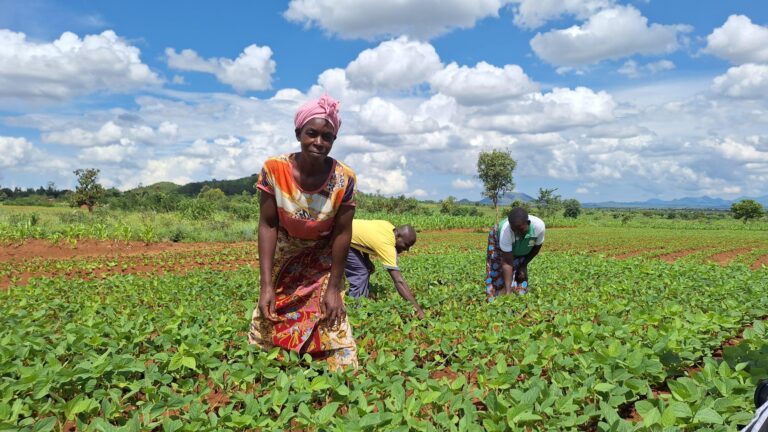As escalating trade tensions continue to reshape global markets, American soybean farmers face mounting uncertainty over their reliance on China, the world’s largest importer of U.S. soybeans. With tariffs disrupting traditional export channels, industry experts and producers alike are questioning whether soybean agriculture can remain viable without Chinese demand. This article explores the challenges and potential strategies for U.S. soybean farmers navigating a market increasingly defined by shifting trade policies and international competition.
Soybean Farmers Confront Shrinking Markets as Tariffs Cut Demand
Amid escalating trade tensions, U.S. soybean farmers find themselves grappling with significant uncertainty. The imposition of tariffs on American agricultural products by key importing nations, notably China, has led to a steep reduction in demand. With China historically accounting for nearly 60% of U.S. soybean exports, farmers are now urgently exploring alternative markets to offset the shortfall. However, regional buyers lack the volume capacity or price competitiveness previously sustained by Chinese demand, leaving many producers in a precarious financial position.
Experts emphasize that diversification is critical for survival, but the transition is neither swift nor guaranteed. Farmers are considering strategies such as:
- Targeting emerging markets in Southeast Asia and South America
- Investing in value-added soy products to appeal to niche consumers
- Negotiating government support programs to buffer income losses
| Market | 2017 Export % | Projected Growth |
|---|---|---|
| China | 60% | -25% |
| Mexico | 8% | +5% |
| EU | 10% | +3% |
| Southeast Asia | 5% | +15% |
While these approaches offer some hope, the road to recovery remains steep, and many soybean farms face tough decisions ahead as they navigate the evolving global trade landscape.
Adapting Strategies and Exploring Alternative Export Destinations
In response to the erosion of China’s dominance as a soybean buyer, many farmers are recalibrating their export playbook to remain competitive. Emphasizing diversification, producers are increasingly looking toward emerging and established markets in Southeast Asia, Europe, and Latin America. These regions offer not only alternative demand but often more stable trade conditions. Additionally, some growers are collaborating with agribusinesses to tailor soybean varieties better suited to local consumption patterns abroad, enhancing their appeal in non-traditional markets.
Key strategies adopted include:
- Forming joint ventures with overseas distributors to streamline logistics and market penetration.
- Investing in value-added processing to increase soybean products’ competitiveness on a global scale.
- Leveraging government export incentives focused on broadening market access.
- Enhancing supply chain transparency to meet international sustainability and quality standards.
| Alternative Market | Projected Demand Growth | Advantages |
|---|---|---|
| Vietnam | 15% annually | Proximity and rising feed consumption |
| European Union | 8% annually | High value-added product preference |
| Mexico | 10% annually | Stable trade agreements |
Investing in Crop Diversification to Mitigate Financial Risks
As soybean farmers grapple with unstable demand from China due to tariffs, many are turning to crop diversification as a vital strategy to protect their financial stability. Expanding beyond a monoculture system not only reduces dependency on a single market but also helps balance income streams across different commodity cycles. Key alternatives gaining traction include corn, wheat, and specialty crops, which have demonstrated resilience in varying market conditions. This shift also opens doors for farmers to tap into emerging local and international markets less affected by geopolitical tensions.
Benefits of diversifying crops:
- Mitigates risks from price volatility in one commodity
- Improves soil health through crop rotation
- Enhances access to new markets and subsidies
- Provides flexibility amid changing trade policies
| Crop | Average Price (per bushel) | Market Diversification Potential |
|---|---|---|
| Soybean | $10.50 | High (China-dependent) |
| Corn | $5.25 | Moderate (Domestic & Export) |
| Wheat | $6.75 | High (Global Markets) |
| Sunflowers | $12.00 | Emerging (Niche Markets) |
Key Takeaways
As the ongoing trade tensions continue to reshape global agricultural markets, soybean farmers face an uncertain future without reliable access to China, their largest customer. While some producers are exploring alternative markets and diversifying crops, the impact of tariffs remains a significant challenge to profitability and long-term sustainability. The resilience of the soybean industry will depend largely on how quickly new trade agreements can be forged and how effectively farmers adapt to shifting economic landscapes. For now, the question remains: can soybean farmers weather the storm without China’s demand, or will the tariffs mark a turning point for American agriculture?




